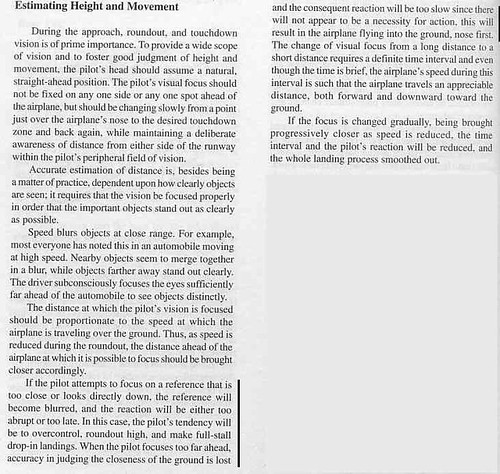FastEddieB
Touchdown! Greaser!
- Joined
- Oct 14, 2013
- Messages
- 11,421
- Location
- Lenoir City, TN/Mineral Bluff, GA
- Display Name
Display name:
Fast Eddie B
In the interest of playing devil's advocate, I will say that a full-stall "style" of landing (which I will decline to participate in the actually-stalled-or-not debate) will result in the nose blocking the view of the runway in a number of airplanes, such as the C150/152. This manner of landing does not seem congruent with attempting to prevent a loss-of-directional-control type of landing accident. Disagreement is welcome.
Then I disagree!
I learned from the beginning, and have gone on to teach, to look out to the left side as the nose came up.
First, in my opinion it's exceedingly difficult to judge height when looking at the far end of the runway, though some promote it and may be able to use peripheral vision to judge height. Does not work for me, however.
Second, it prepares a pilot to transition to myriad planes with poor or nonexistent view over the nose in the landing attitude. It prepared me for teaching from the rear of Citabrias, though in that tandem plane I came to prefer the view to the right - probably because as a CFI I was used to sitting right seat most of the time.
I've posted this link before, but it's a decent summary of my position - with photos!
https://www.dropbox.com/s/yj9oez6gk40jk36/Wheretolook.pdf?dl=0
Last edited:

